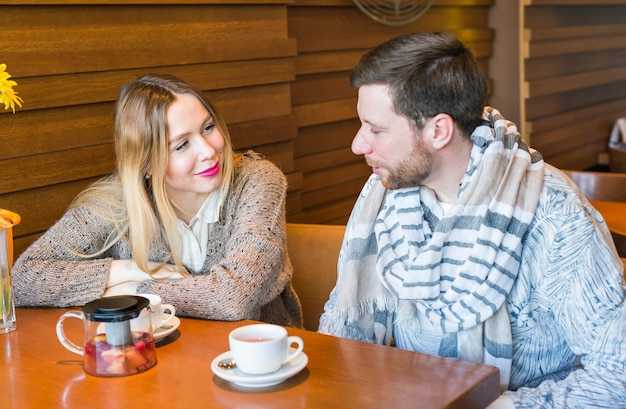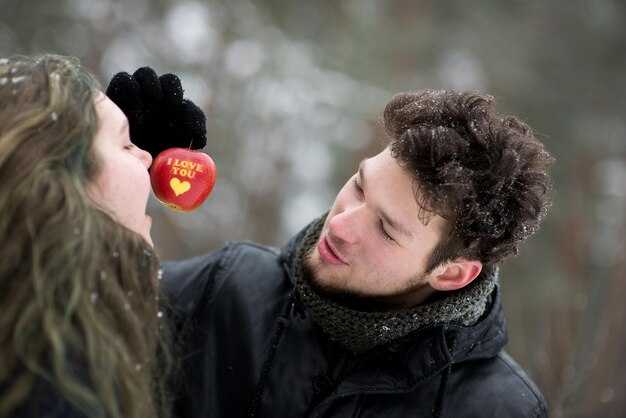Focus on proximity: sustained closeness under 1.2 m plus repeated eyebrow lifts and posture mirroring are the single most crucial immediate signals; in a full 10–15 minute window, four or more eyebrow raises or directed gaze exceeding ~60% of the time strongly suggests a spark.
Measure movement speed and micro‑behaviors: slower, smoother gestures and minimal hand‑shaking correlate with comfort, while rapid speed, visible shaking, or obvious nerves often indicate anxiety rather than disinterest. A university observational protocol recommends logging frequencies (counts per 10 minutes) rather than interpreting one isolated moment.
Look at attention and posture adjustments: where people are looking, how shoulders orient, and whether hinges at the torso point inward are actionable markers. Do not miss repeating patterns – repeated phone checks, frequent glances, or a subtle suit adjustment can spell intent even when verbal content is neutral.
If this pattern happens, match distance and tempo by about 20–30% and offer low‑risk prompts; someone who might be shy will show subtle cues such as small smiles, prolonged orientation, and increased listening. An artist or introvert may express interest through different nuances; great signs include reciprocal disclosure and shared laughter, while awesome chemistry typically accumulates across multiple micro‑indicators. Meanwhile, combine several signals over time for a reliable assessment.
Live checklist: concrete signs to observe during a date
Focus on sustained eye contact: hold for 3–5 seconds and note repeats – repeated returns to gaze show the person across is engaged.
Check microexpressions: catalogue smiles under 0.5s, eyebrow flashes, and brief tightening around the mouth; mark what provokes each tiny reaction with a timestamp.
Monitor breathing: count breaths for 30 seconds; slower, deeper cycles within the first five minutes usually indicate comfort, rapid shallow breathing suggests arousal or anxiety.
Observe proximity: movement to come close (6–12 inches) during conversation signals comfort and likely intent; consistent stepping back is a clear boundary cue.
Track touch patterns: light, casual touches on the arm or shoulder repeated over time mean rapport; absence of touch means nothing without context – combine with other signals.
Note vocal changes: lower pitch, steady pace, and deliberate pauses correlate with engagement; sudden quickening of words often pairs with nervous excitement.
Compare verbal topics and nonverbal signals: meanwhile, if words express disinterest but posture, microexpressions, and breathing show openness, weigh nonverbal evidence higher.
Account for gender and different cultural norms: a female may avoid direct gaze for politeness; classify signals by kinds and avoid single-cue conclusions.
Watch for grooming gestures: repeated hair adjustments, face touching, or licking lips can indicate attraction or nervousness; evaluate frequency and context before assigning meaning.
If names come up, log emotional shifts: if they say traci or mention home or exes, note changes in breathing and tone – repeated emotional spikes around specific interests predict importance.
Use short, objective notes within a phone app after the meeting: record timestamps, the cue, and the presumed meaning; patterns over multiple meetings are more reliable than isolated moments.
In case of mixed signals, ask one clear question about comfort and preferences; silence or avoidance should not be interpreted as affirmation – consent matters.
If interpretation remains unclear, consult a counselor or trusted third party for perspective; do not invent a witch spell of assumptions, since misreading cues can greatly mislead.
What does sustained eye contact mean – how long indicates interest and when to act
Recommendation: If sustained eye contact holds 2–4 seconds, smile and lean in or ask a light question; if it lingers 4–8 seconds, mirror subtly and offer a gentle opener; beyond ~8 seconds, step back and respect boundaries immediately.
Durations mapped to likely intent: under 1 second usually registers as passing acknowledgement; 1–2 seconds is neutral attention; 2–4 seconds commonly indicates interest or attraction across many social situations; 4–8 seconds signals stronger engagement or testing of rapport; sustained gaze beyond 8–10 seconds often creates discomfort and may indicate dominance rather than warmth. Experts and lmhc clinicians cite these degrees as practical guidelines, while noting cultural and personality nuances that can change interpretation.
Context cues matter more than raw seconds. Look at face orientation, head direction, whether the torso is turned toward the person, hand movements, if someone is adjusting clothing or hair, and where they sit–sitting across a table with a door behind them reads differently than side-by-side on a couch. Small changes–a smile that builds, a head tilt, a hand that reaches out then withdraws–can indicate attraction more reliably than a lone lingering stare. Images or captions from getty can illustrate these micro-signals but real interaction requires attending to nuances in real time.
Practical steps: match comfortable degrees of eye contact for 1–2 cycles of interaction, then escalate only if other cues align; please check micro-signals and ask a simple check-in if unsure (“Are you comfortable?”). Trust instincts but verify with open, brief verbal permission before any physical approach. Noticed discomfort requires immediate adjusting of proximity and gaze; consistent positive cues allow you to build toward a clearer connection while respecting boundaries that reflect individual personality and timing.
How to tell a genuine smile vs a polite smile and what to do when you see one
Look for eye crinkles (orbicularis oculi), symmetric mouth lift and a smooth onset of 0.3–1 second with a 1–5 second plateau – those three objective markers most reliably indicate a genuine smile.
heres a practical checklist: genuine smiles involve the eyes (crow’s feet), teeth show naturally, onset is gradual and speed becomes slower at fade, expression is whole-face and deeply anchored; polite smiles are quick, limited to the mouth, often asymmetric, and disappear without lingering. In case someone gets stressed after a long conversation their smile can shift between both types; a quick polite smile can be social padding, nothing malicious, but if the same smile repeats while the voice stays flat or phrases feel scripted, treat it as surface-level. Practically every genuine smile also produces small changes in breathing and voice timbre and may make the shoulder relax – watch for that.
Action steps when a genuine smile appears: mirror warmth subtly (matching eye contact and a similar smile), lower speaking speed and voice to deepen rapport, ask one focused open question and listen; offer a simple gesture – pass a napkin, suggest a short break together, or make a light compliment like “That was cute” or “Great point.” If a smile seems meant to manipulate, set a boundary, keep distance, and perform quick internal reviews before committing; either way, respond to signals, adjust posture and phrasing, and let the interaction become reciprocal rather than forced.
How to interpret light touches: testing, escalation cues, and safe reciprocation
Start by treating a light touch as a low-stakes social test: if it’s quick (under 1 second) and followed by smiles, eye contact and a relaxed face, mirror that brief contact once and watch for escalation cues before matching again.
- Duration guidelines:
- Under 1 second – usually incidental or a quick social cue.
- 1–3 seconds – typical testing touch; not necessarily sexual, often called a probe.
- Over 3 seconds – lingering touch that signals stronger intent; treat as escalation and check verbal/nonverbal consent.
- Frequency and timing:
- Single, isolated touches are tests; repeated touches within a short span (3–20 seconds) increase the amount of intent.
- Context matters: touches during relaxed conversation at home or late-night settings carry a different message than the same touch in a crowded cafe.
- Location and side cues:
- Hand/forearm/upper arm = low to moderate intimacy; touching lower back or thigh = higher escalation.
- Touch on the side of the body (side of forearm, rib) usually signals closeness; hand-to-hand contact is more explicit than a tap on the shoulder.
- Accompanying nonverbal signs that indicate comfort:
- Natural smiles, leaning in, stable eye contact, feet or foot turned toward you, open palms.
- Adjusting posture toward you, minimal fidgeting, a relaxed face, and a consistent flirty or warm tone when they talk.
- Research finds that touch paired with positive cues increases perceived closeness by a measurable amount; interestingly, small touches can shift impressions more than words alone.
- Red flags and signals of discomfort:
- Quick withdrawal, tense shoulders, adjusting clothing suddenly, turning the face away, a darker or guarded expression, or stepping back – these are clear signs to stop.
- If they appear stressed or start misinterpreting signals (laughing nervously while avoiding eye contact), treat it as nonconsent and give space.
- Safe reciprocation protocol (simple, stepwise):
- Match duration and location once (mirror). If they smile and maintain proximity, you can repeat the same contact.
- If cues escalate (lingering touch, closer body angle, foot aimed at you), try a slightly longer reciprocation or a gentle hand-hold.
- If unsure, ask a brief verbal check: “Okay?” or “Is this cool?” – short, direct language works better than long explanations.
- Never escalate faster than the other person; safer to advance slower than they expect than to force a turn into uncomfortable territory.
- Practical scripts and aftercare:
- Quick reinforcement message after a date: a neutral text that references shared moments can confirm mutual interest without pressure.
- If a touch was misread, apologize briefly, clarify intent, and shift to a different type of closeness (talk, shared activity) to recalibrate.
- Notes on interpretation:
- Humans send mixed signals; youre interpreting a mix of nonverbal cues, context, and prior interaction patterns rather than a single gesture.
- Misinterpreting a friendly touch as romantic is common in early dating – prioritize consent and clear feedback over assumptions.
How to read open vs closed posture and small adjustments that invite closeness
Recommendation: Angle torso 15–35 degrees toward the other person, keep palms visible, relax shoulders and move 10–20 cm closer when conversation shares reciprocal interest; this small change signals readiness for more physical closeness.
Open posture examples that work: torso turned toward partner with an exposed chest and uncrossed arms, feet pointed inward, and a slight head tilt. Closed posture answers with crossed arms, torso turned away more than 30 degrees, shoulders raised and hands hidden–these appear defensive and reduce perceived intimacy.
Micro-adjustments that actually invite approach: lower voice by 3–6 dB, shorten gap by 6–12 cm when sitting, angle knees toward the person and mirror their shoulder slope by 5–15 degrees. Replace an arm-cross with a palm-on-table gesture for 2–5 seconds; that small visible openness conveys availability without heavy touch.
Eyes: direct but soft contact looks engaged; avoid staring longer than 3–4 seconds. Pupil dilates in low light and with attraction–expect changes on the order of a few tenths of a millimetre when lighting is controlled. Brief glances at lips followed by eye contact convey interest; constant, fixed staring tends to push people away.
Stillness and motion: brief pauses and slow forward leans (4–10 degrees) have more effect than rapid movement. People doing subtle mirroring–matching posture, tempo of gestures and breathing–are signalling rapport; if theyre mirroring you within 2–5 seconds, that’s a strong nonverbal sign.
Gender note: mens and womens cues overlap but can differ in degree. mens may show approach by enlarging stance or facing square-on; others may lean and reduce personal distance. Fair to note that individual variation is large, although consistent clustering of signs is meaningful for mate selection.
Practical checklist to try in conversation: (1) open palms on table for 3–6 seconds, (2) angle torso 15–25 degrees toward them, (3) tilt chin down by 5 degrees, (4) remove barrier (bag or phone) and move 10 cm closer. If the other person matches these moves or answers with similar proximity, everything points toward mutual interest.
What to avoid: replacing verbal questions with constant touching too early, staring without softening, or keeping a rigid posture. If theyre repeatedly pulling back, crossing arms, or turning feet away, thats a clear nonverbal refusal. If they lean in, lightly touch the forearm for under 2 seconds and they dont pull away, youd proceed slowly–small, natural adjustments usually work far better than bold leaps.
How vocal changes (pitch, pace, laughter) signal attraction and how to mirror them
Lower pitch by about 1–2 semitones and slow speed 10–15%; match laugh placement and length within two conversational turns – concrete changes convey interest faster than compliments.
Become aware of baseline: record a 30‑second sample or count syllables per minute (typical speech speed 120–160 SPM). Think in semitones and percent changes – the ideal amount to shift is small, so it appears naturally matched to theirs.
Practical mirroring steps: on the listening side, copy pitch center, then pace, then micro‑pauses. Mirroring hinges on timing – mirror speed within ±10% and tonal center within 1–2 semitones, subtly adjust volume and breath so it feels like conversation, not mimicry.
Handle laughter by kind: short chuckles require short returns, breathy smiles call for softer laughs, loud open laughs can be mirrored with slightly reduced amplitude. Match placement (end of phrase, mid‑sentence) rather than exact intensity; this makes mirroring feel safer and more genuine.
Context matters: gender and culture set different pitch and prosody baselines; stressed speakers raise pitch and speak faster, so slow down toward calm rather than copy tension. Think like a counselor attuned to affect – attunement worked when it increases perceived closeness without obvious imitation.
Rules to use: best first step – match speed; next match pitch center; then mirror laughter style. A simple rule: wait one exchange, mirror within 2–3 seconds, then pause to see response. Pair vocal mirroring with a small gesture and open posture in the same area of space to strengthen the signal.
What to avoid: excessive matching makes interaction appear rehearsed or mocking. If mirroring feels forced, back off 20% into your natural register; the balance hinges on subtlety. A behavioral science writer recommends testing mirroring on a first-date in short bursts to see if it worked for both sides.


 How to Tell if Your Date Likes You – Read Their Body Language">
How to Tell if Your Date Likes You – Read Their Body Language">



 How Do You Know You Love Someone? 10 Signs It’s More Than a Crush">
How Do You Know You Love Someone? 10 Signs It’s More Than a Crush">
 The Cheating Man’s Brain – Psychology, Causes & Signs">
The Cheating Man’s Brain – Psychology, Causes & Signs">
 How to Talk to Kids About Divorce – 10 Essential Tips">
How to Talk to Kids About Divorce – 10 Essential Tips">
 Boost Dating Confidence – Mindfulness & Self-Compassion Tips">
Boost Dating Confidence – Mindfulness & Self-Compassion Tips">
 How Much Alone Time Is Normal in a Relationship? Guide">
How Much Alone Time Is Normal in a Relationship? Guide">
 Donald J Marckini – Biography, Proton Therapy Advocate & Author">
Donald J Marckini – Biography, Proton Therapy Advocate & Author">
 Why Women Need Masculine Energy in Men — Benefits & Reasons">
Why Women Need Masculine Energy in Men — Benefits & Reasons">
 5 Ways to Overcome Dating Burnout — Reignite Your Love Life">
5 Ways to Overcome Dating Burnout — Reignite Your Love Life">
 148 Date Ideas From a Dating Expert — Fun, Unique & Not Boring">
148 Date Ideas From a Dating Expert — Fun, Unique & Not Boring">
 How to Make Others Feel Seen, Heard and Loved – 10 Practical Ways">
How to Make Others Feel Seen, Heard and Loved – 10 Practical Ways">